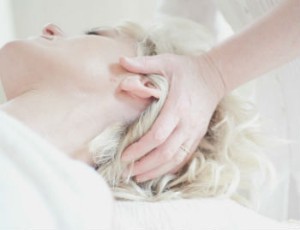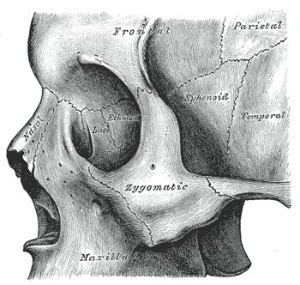Introduction to Craniosacral Therapy

by Nina Applegate, LMT
Craniosacral therapy (CST) is an energetic and gentle form of bodywork, and it is beneficial for a wide variety of conditions. CST was first developed by John E. Upledger, an osteopathic physician and professor of biomechanics. CST focuses on the cranium, the dura mater around the brain, spinal column, sacrum and the cerebral spinal fluid surrounding the brain and nerves. It is meant to compliment and assist our bodies already existing capacity for self care and healing.
It can be difficult to comprehend how a manual therapy can affect the brain and nervous system. A CST practitioner uses very light touch to move cerebral spinal fluid as well as remove restrictions. Aspects of the functional systems involved with the benefits of CST are related to recent discoveries of previously unknown lymphatic vessels in the brain from researchers at the University of Virginia School of Medicine. In a publication they stated:
 "The unique location of these vessels may have impeded their discovery to date, thereby contributing to the long-held concept of the absence of lymphatic vasculature in the central nervous system."
"The unique location of these vessels may have impeded their discovery to date, thereby contributing to the long-held concept of the absence of lymphatic vasculature in the central nervous system."
The discovery of these vessels show that there is a connection between the brain and the lymphatic system. This means that there is movement of fluids in an area previously thought to have very little movement or connection to the rest of the body. The flow of the cerebral spinal fluid is essential to CST. When facilitated, it removes waste and brings new nutrients and oxygen to the brain and in turn helps the nervous system function optimally.
What can Craniosacral therapy treat?
Since CST is very much centered around the nervous system, it can have a positive effect on all the body systems controlled hereby. Research has found it helpful for pain, especially conditions like fibromyalgia, tmj, migraines and neck pain.
A 25 week study of people with fibromyalgia had a group receiving CST and a placebo group. This study set out to evaluate CST in regards to pain, sleep quality and anxiety. Everyone not receiving CST had higher levels of anxiety, pain and quality of sleep. One year later the sleep quality was still improved for the test group receiving CST.
This study gives some insight into what CST can help with; not only the pain from overactive nerves, but also the anxiety and sleep problems that can come with fibromyalgia. It is very gentle and calming for the nervous system, and the techniques used are designed to facilitate these positive changes.
Neck pain as well as lower back pain are unfortunately common complaints among most people. Two studies show CST as being helpful in lowering pain in patients with either of these issues.
With regards to neck pain, a study found CST to be safe. It not only lowered pain levels, but also improved quality of life up to 3 months after. Another study focusing on lower back pain found CST to have a greater improvement on lower back pain over the course of 10 sessions than massage. This particular study also found that CST improved systolic blood pressure.
These two studies show CST's relevance when it comes to pain and that it can have a significant impact on quality of life for patients living with pain.
CST also has a positive effect when it comes to psychological and emotional issues. Like stated above, it was shown to lower anxiety in patients with fibromyalgia. Craniosacral therapy is however contraindicated for people with an excess amount of cerebral spinal fluid.
What is a Craniosacral session like?
Patients receiving a CST treatment are always fully dressed and usually laying comfortably on their back on a massage table. The practitioner uses a light touch, around the weight of a nickel, to feel for restrictions and dysfunctions. The practitioner then uses very specific techniques (with the same light pressure) to release the restrictions in the body and ensure optimal flow of cerebral spinal fluid.
Techniques may include the CST practitioner's hands being gently place on the cranium, abdomen and sacrum. Patients generally find the session very relaxing and quite often fall asleep during a treatment.
tag @yinyanghouse for questions/comments